What's the Proper Dinner Plate Size Per Occasion?
Author: Rick Worst | Editor: Omar Alonso
Review & Research: Jen Worst & Chris Miller
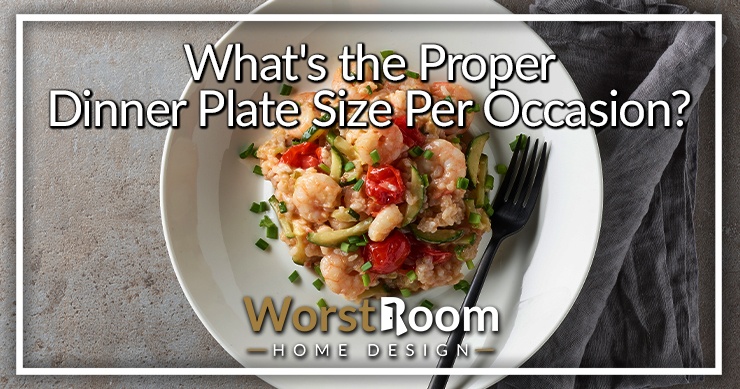
Are you hosting a dinner party for friends on the weekend? You're probably wondering what is the correct dinner plate size. After all, you don't want to look like an amateur to your peers. The plate size is an important factor in the meal; it determines how much food fits on the plate and how many friends you can seat around the table.
When it comes time to clean up after the guests leave, the plate size determines the load you can fit in the dishwasher. Kitchen cabinets and dishwashers come in standardized sizes, so understanding the correct plate size ensures a good fit for the appliance and comfortable storage for the plates.
However, plates don't come in standardized sizes, and they can vary depending on the manufacturing brand and the type of dining experience you want to provide guests. Not only do plates come in different size options, but they're also available in different shapes.
Visit a restaurant, and they might serve our meal on a round, rectangular, square, or oval plate. This post unpacks the different types of plate sizes to give you an idea of which will make the best size option for your dinner party.
Standard Dinner Plate Sizes
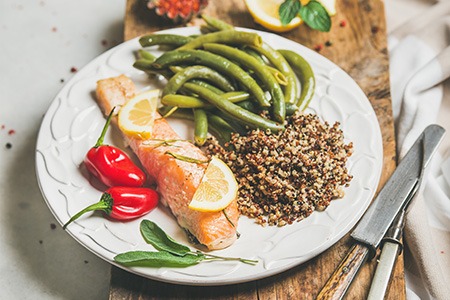
There's no standard size dinner plate, though there are conventions. However, manufacturing brands produce plates in the following common sizes. Some might have specialty dimensions, but, in general, you'll find the following sizes available in round dinner plate designs.
So, what size are dinner plates? Let's cover the common dinner plate sizes in inches. These are dinner plate diameter measurements, meaning from side to side in a straight line through the center of the circle.
9-inch Dinner Plate
The 9-inch dinner plate is the most common size in Europe, but it might seem small for Americans who are used to eating off larger plates at home and in restaurants.
10-inch Dinner Plate
The 10-inch diameter is recommended for home use and dinner parties with friends. You get enough space for a decent-sized portion without overfilling the plate.
11 to 12-inch Dinner Plate
The 11 to 12-inch plate is more common n in the US, especially for use on special occasions like Thanksgiving and dinner parties. It's not really the best choice for everyday use and does better for special events where you want to set an impression of restaurant-style dining at home.
13-inch Dinner Plate
Most ala carte and restaurants use 13-inch plates for a fine dining experience. It's not a good choice for use at home if you have limited space around the dining table, and it doesn't look good with standard-size placemats. You'll also struggle to get them to fit in the dishwasher and might experience problems with chipping.
Top Considerations for Dinner Plate Size
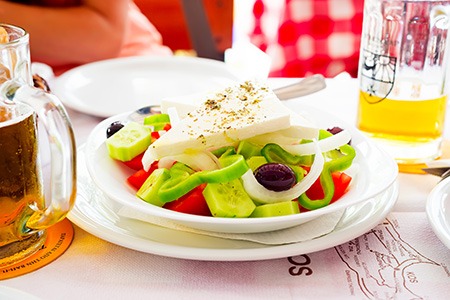
Rules are made to be broken. It’s not just occasion but many other considerations to take when deciding what dinner plate size to use. But again, they’re all bendable. Let’s look at those considerations for your dinner plate dimensions now.
Portion Sizes
Plate size is a key factor in determining portion size. Most home chefs don't measure the weight of the food; they fill the portion to fit the plate. If the plate is too large, the chef generally overfills it, leading to more leftovers and food waste after a meal.
During the 1960s, the average plate diameter was seven to nine inches; today, that's increased to 11 to 12 inches. Some restaurants serve food on 13-inch plates. So, that means the average home dinner plate increased a staggering 36% in the last 50 years.
Let's look at obesity rates in Europe versus the US. One notable fact is that European plates are seven to nine inches versus 11 to 12 inches in America, and that might have some relationship to waistline size and BMI in the two countries.
Food Presentation
Presenting the food properly on the plate sets the impression of the meal. The right presentation excites the senses and inspires a better dining experience. People appreciate a well-presented meal, making it seem more appetizing and well-received by the diners.
The size of the dinner plate plays an important role in the presentation. If the plate appears too small, the food spills over the edge, creating the impression the chef or host didn't put much thought into the presentation or the meal. It also makes the meal challenging to eat without making a mess of the placemat and the tablecloth.
If the plate is too large for the meal, you could make the portion appear disproportionately small, making the diner feel like they didn't receive enough food. Or a large plate can bring a balanced look to the portion size if it fills the plate, but it might result in the guest not being able to finish their meal, creating a sense of food waste and appreciation for the chef if the guest leaves food behind on their plate.
Table Size
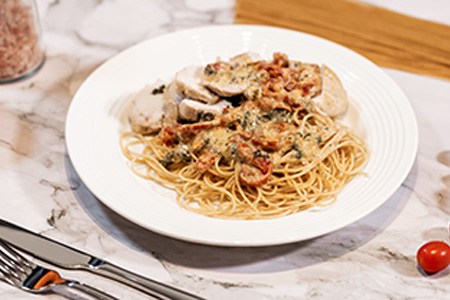
It's common to see fine dining restaurants present meals on oversized plates. In some instances, the plates may even struggle to fit side-by-side on the table without affecting the setting.
Using the right size plate for the table and the number of guests seated won't create this crowding effect. Consider the silverware, the types of drinking glasses, and how much room you need for comfort as well.
Cleaning Dinner Plates
Most American households have a dishwasher for taking care of cleaning up after a meal. You'll need to buy plates that fit comfortably inside the appliance, allowing you to close the drawers without clashing.
I've personally bought dinner plate sizes that don't fit in my dishwasher without them leaning over way too far, blocking the water movement. If the plates have a wide diameter, the dishwasher cleaning arm might not spin freely, resulting in ineffective cleaning of the plates.
Storing Dinner Plates
Oversized dinner plates also present a challenge in fitting them into the standard-sized kitchen cabinet for storage after cleaning. Please take a minute to measure the cabinet depth before buying your plates to ensure you can fit them inside. Kitchen cabinets are usually a standard size. But smaller kitchens might cut down on cabinet space to make the space more maneuverable.
What Is the Correct Size for Side Plates?
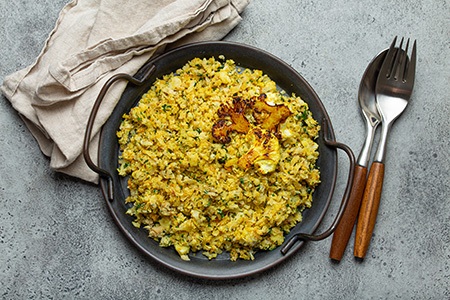
A side plate usually has a diameter of six to seven inches. Side plates are versatile in function, allowing the serving of bread, salads, and other appetizers before or with the main course. Side plates also serve as a placeholder for napkins, butter knives, and condiments.
Some people may also require side plates to split their meals with others, such as when sharing tapas. If your table isn't cramped and has ample space for side plates, you can change things up and use starter plates to serve the same purpose.
The typical size of a started plate is slightly larger than a side plate, with a seven-inch diameter. They serve the same functionality as side plates but make a good compromise on larger, open table settings.
What Is the Correct Size for Appetizer Plates?
All good meals start with an appetizer served to the guests to build anticipation for the main meal. Appetizers have smaller portion sizes than main meals and are ideal for introducing guests to the dining experience for the evening ahead.
An appetizer plate is usually larger than a starter plate, around eight inches in diameter. They're also a good choice for incorporating into meals that require and encourage a shared dining experience between the guests.
Anything smaller than an eight-inch diameter for the appetizer plate starts to creep into the territory of side plates. Anything larger starts to encroach on dinner plate sizing. A question is do you even need these when staging your dining room?
What Is the Correct Size for Dessert Plates?
A dessert plate is usually between eight and ten inches in diameter. The reason why dessert plates are usually larger than appetizer plates and in the neighborhood of dinner plate size is to accommodate the side dressings for the dessert.
Some restaurants may use a smaller plate when accommodating desserts such as panna cotta or crème Brulé. How big you want to go with your dessert plates is up to you.
What Is the Correct Size for Soup Plates?
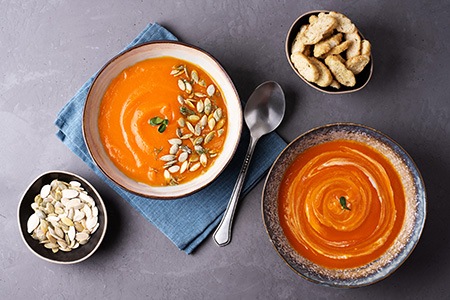
A soup plate serves as a hybrid between soup bowls and dinner plates. They're the ideal choice for layering on dinner plates on formal dining occasions. Depending on the design, a soup plate can measure between eight to ten inches in diameter. Some soup plates feature a wider brim, while others have a smaller diameter, narrow rim, and slightly deeper center bowl.
What Is the Correct Size for Bread & Butter Plates?
Bread and butter plates can feature alongside side plates for a dedicated space for bread and butter or for papadums in Indian cuisine. They bring a sense of depth to the table setting and décor. They're a versatile design and usually come in six to eight-inch diameters.
What Is the Correct Size for Serving Plates?
Serving plates or platters are the ideal finishing feature for a table setting. They usually feature an oval-shaped design for aesthetic and functional purposes. The contrasting shape of a round dinner plate creates a purposeful design statement, clearly indicating the purpose of the plate at the dinner table.
Most serving platters are approximately 12 inches in length and 10 inches in width. Some may be larger, depending on the purpose of the plate and how many guests you're serving. Serving platters may take on the action of a plate if the chef wishes to consolidate the dining experience for the guests.
For instance, if you're serving fried rice with grilled chicken, you could place the mound of rice on one side of the serving platter and the chicken on the other. Place a small bowl of broth on the serving platter to separate the items and create defined boundaries between the two foods.
Dinner Plate Size Guide Explained
You now know all of the various considerations when it comes to dinner plate sizes. While there are standardized plate sizes, there’s so many of them that you have nearly endless flexibility in your decision making. Read the guide and trust your gut and it’ll come out fine. But make sure they fit your table and your cabinets!



